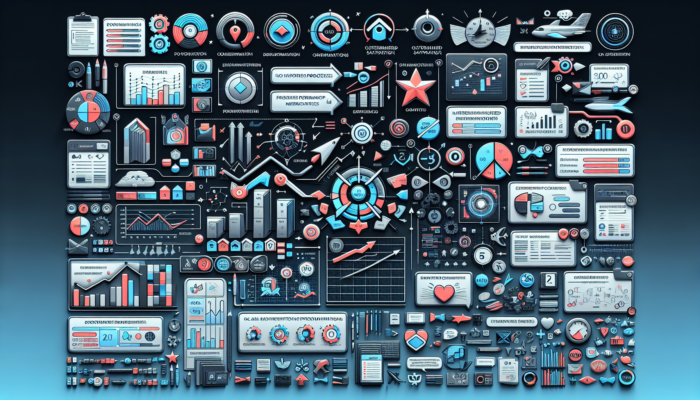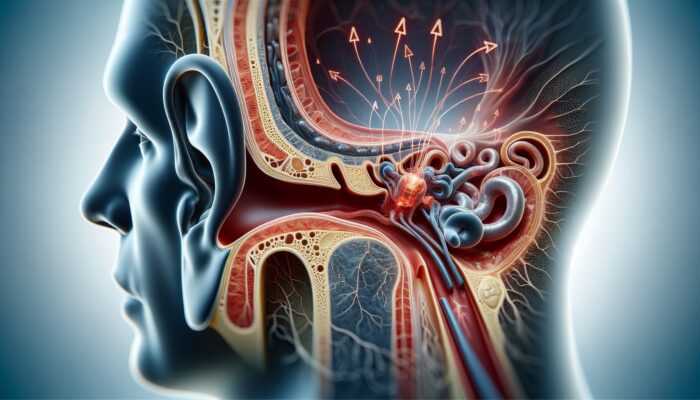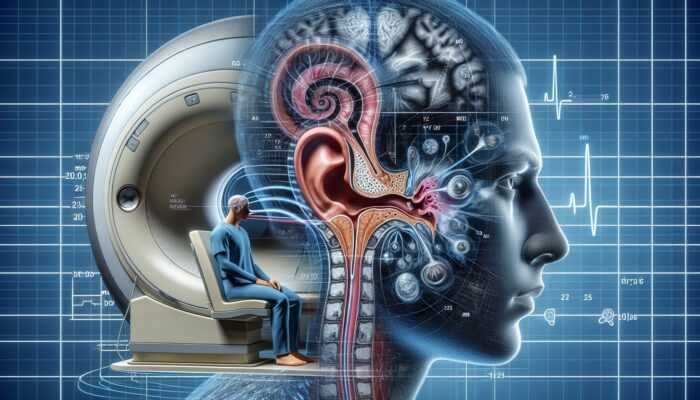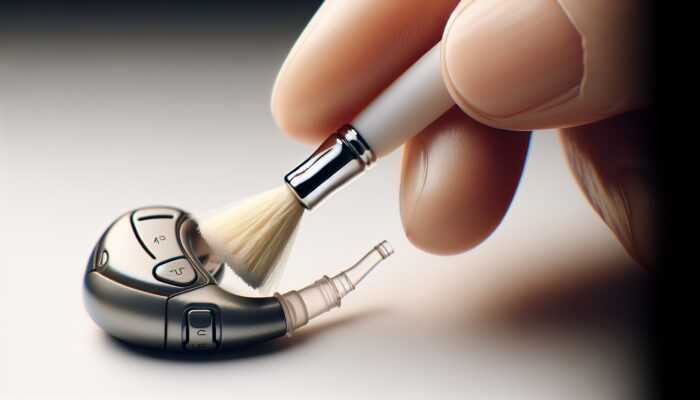Understanding Data Protection and Privacy Laws in Healthcare
Achieving Comprehensive GDPR Compliance for Healthcare Organisations
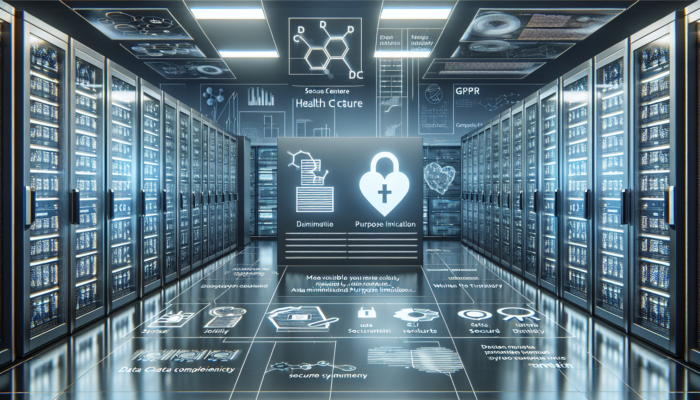
To truly grasp the complexities of healthcare technology compliance, one must delve into the specifics of the General Data Protection Regulation (GDPR). Since it came into effect in May 2018, GDPR has significantly reshaped the manner in which healthcare organisations across the UK handle and process patient data. Compliance with these regulations is not merely about fulfilling a legal requirement; it embodies a deep-seated commitment to preserving patient trust and adhering to ethical standards. Key principles outlined in GDPR, such as data minimisation and purpose limitation, mandate that organisations collect only the data that is essential for explicitly defined purposes, ensuring that patient information is treated with the utmost respect.
The rights of patients under GDPR are of utmost importance. Individuals possess the right to access their personal data, request necessary corrections, and even ask for deletion under specific circumstances. This places considerable responsibility on healthcare technology providers to establish robust systems that facilitate these rights, empowering patients to maintain control over their personal information. To ensure compliance, organisations must engage in regular audits, provide comprehensive training for staff on data protection, and embrace the concept of privacy-by-design in their technological solutions to create a culture of accountability.
Furthermore, it is crucial for healthcare providers to recognise that data breaches can yield serious consequences. GDPR enforces stringent penalties for non-compliance, which can include fines reaching €20 million or up to 4% of annual global turnover, whichever amounts to a higher figure. This reality highlights the necessity for a proactive approach to compliance, fostering an organisational culture that prioritises privacy and data protection throughout the healthcare landscape.
Implementing Effective Data Breach Notification Protocols
In the healthcare sector, the ramifications of data breaches can be dire, affecting both patients and the organisations involved. The GDPR stipulates that any data breach posing a risk to individual rights must be reported to the Information Commissioner’s Office (ICO) within 72 hours of the organisation becoming aware of it. This swift response is essential—not only for legal compliance but also for maintaining patient trust and confidence in the healthcare system.
When a breach is detected, organisations are also required to inform affected individuals if the breach is likely to pose a significant risk to their rights and freedoms. This dual notification process is critical for ensuring transparency, equipping patients with the necessary information to take protective measures against potential threats, such as identity theft and fraud.
To effectively manage data breaches, healthcare organisations must develop comprehensive incident response plans that clearly delineate procedures for identifying, reporting, and responding to breaches. Regular training and simulation exercises can prepare staff to address incidents promptly and efficiently, ensuring that compliance with GDPR remains intact while prioritising the safety and security of patient information.
Streamlining Patient Consent Management for Compliance
The process of obtaining and managing patient consent is a fundamental aspect of healthcare technology compliance. Under the GDPR framework, explicit consent is mandated for processing personal data, particularly when it involves sensitive health information. Consequently, healthcare providers must ensure that their consent mechanisms are clear, easily understandable, and fully transparent to patients.
In practical terms, this means providing patients with comprehensive information regarding the data collected, its intended use, and any potential sharing with third parties. Effective consent management systems should be designed to allow patients to provide, withdraw, or modify their consent without difficulty. This degree of control not only empowers patients but also contributes to a culture of trust and transparency within healthcare organisations.
Additionally, healthcare organisations should maintain meticulous records of consent to demonstrate adherence to GDPR requirements. Such records can be managed through secure digital systems that track consent status and preferences over time. Implementing these systems not only streamlines compliance efforts but also enhances patient engagement by enabling individuals to take an active role in managing their own data.
Establishing Robust Data Retention and Deletion Policies

Data retention policies are a critical component of healthcare technology compliance. The GDPR mandates that personal data should not be retained longer than necessary for the purposes for which it was processed. This necessitates the development of clear data retention policies within healthcare organisations that outline specific timeframes for data storage based on legal, medical, or operational requirements.
Once the retention period has expired, it is imperative to have stringent procedures in place for the secure deletion of patient data. This includes not only the physical destruction of data storage devices but also ensuring that digital data is rendered irretrievable. Adhering to these regulations is vital for protecting patient privacy and mitigating risks associated with potential data breaches.
To effectively manage data retention, healthcare organisations should regularly review their data holdings to ensure that unnecessary or outdated data is disposed of promptly. This proactive approach not only enhances compliance with GDPR but also optimises data management practices, freeing up valuable resources within the organisation and allowing for more efficient operations.
Comprehending NHS Digital Standards for Healthcare Technology
Navigating Interoperability Requirements in Healthcare Systems
Interoperability stands as a fundamental principle central to the NHS’s vision for a cohesive and interconnected healthcare system. Achieving seamless data exchange between diverse healthcare systems is essential for elevating patient care, minimising duplication of services, and ensuring that clinicians have timely access to critical information. Grasping the NHS’s interoperability requirements is an indispensable aspect of healthcare technology compliance.
NHS Digital has established a set of standards designed to promote interoperability, focusing on the utilisation of common data formats and protocols. These standards enable different systems to communicate effectively, facilitating the secure sharing of patient information across various healthcare providers. The ability to share data seamlessly enhances clinical decision-making, as healthcare professionals can access comprehensive patient records, irrespective of the location where care is delivered.
Complying with these interoperability standards requires healthcare technology providers to prioritise integration capabilities within their solutions. This encompasses not only technical compliance but also necessitates a commitment to fostering collaboration among stakeholders within the healthcare ecosystem. By cultivating a culture of shared responsibility, organisations can work collectively towards a unified approach to managing patient data.
Ensuring Clinical Safety Standards in Healthcare Technology

Patient safety is paramount in any healthcare setting, especially when it comes to the deployment of healthcare technology. The NHS has instituted clinical safety standards that dictate the safe design and utilisation of digital technologies. Understanding these standards is crucial for organisations aiming to comply with regulatory requirements and enhance overall patient safety.
Clinical safety standards focus on identifying and mitigating risks associated with the use of technology in healthcare settings. This includes rigorous testing of both software and hardware to ensure reliability and effectiveness. Healthcare technology providers are mandated to conduct Clinical Safety Cases that demonstrate how safety has been integrated into the development and deployment of their products.
Organisations are also required to establish robust governance frameworks to oversee the implementation of clinical safety standards. Regular audits, comprehensive training, and effective feedback mechanisms are essential for maintaining compliance and ensuring that safety remains a top priority in the integration of technology within the NHS.
Implementing Comprehensive Cybersecurity Measures in Healthcare
In a time when cyber threats are becoming increasingly sophisticated, robust cybersecurity measures are essential for safeguarding sensitive healthcare information. The NHS has put forward specific protocols and best practices designed to protect healthcare technology from cyber risks. Understanding these measures is a crucial component of healthcare technology compliance.
Cybersecurity within the NHS involves multiple layers of protection. From firewalls and encryption to regular security assessments and continuous staff training, organisations must adopt a multifaceted approach to protecting patient data. The NHS Cyber Security Strategy delineates the steps that healthcare organisations should take to identify vulnerabilities, respond to incidents, and recover from attacks effectively.
Moreover, compliance with the Data Security and Protection Toolkit is essential for NHS organisations. This toolkit offers a self-assessment framework that assists organisations in evaluating their cybersecurity measures and pinpointing areas needing improvement. Regularly updating security protocols while cultivating a culture of cybersecurity awareness among staff will significantly reduce the risk of data breaches and ensure adherence to NHS standards.
Understanding Care Quality Commission Regulations in Healthcare
Enhancing Care Quality Through Technology Assessment by the CQC
The Care Quality Commission (CQC) plays a pivotal role in regulating and inspecting healthcare services, including the integration of technology to enhance care quality. Understanding how the CQC assesses the role of technology in care delivery is crucial for organisations seeking to ensure compliance and improve patient outcomes.
The CQC evaluates the effectiveness of technology integration into care pathways, scrutinising whether it enhances patient safety, facilitates improved communication, and ultimately leads to better clinical outcomes. Inspections concentrate on the effectiveness of digital systems in supporting care delivery, paying special attention to their contribution to positive patient experiences.
Organisations must ensure that their technology aligns with the CQC’s fundamental standards of care. This includes prioritising patient-centred design, ensuring accessibility, and providing adequate training for staff to utilise technology effectively. By demonstrating a commitment to integrating technology in ways that enhance care quality, organisations can not only achieve compliance but also foster a culture of continuous improvement in healthcare delivery.
Preparing for Comprehensive Compliance Inspections by the CQC
Compliance inspections conducted by the CQC are thorough and multifaceted, evaluating various aspects of healthcare delivery, including the utilisation of technology. Understanding the CQC’s inspection processes related to healthcare technology compliance is essential for organisations aiming to uphold high care standards.
During these inspections, the CQC assesses how technology is being employed to support safe and effective care. This involves examining whether systems are user-friendly for both staff and patients, verifying that adequate data security measures are in place, and determining if technology facilitates effective communication among care teams. The CQC also evaluates whether organisations are actively collecting and utilising data to drive service improvement and enhance patient outcomes.
To adequately prepare for CQC inspections, healthcare organisations should conduct internal audits of their technology usage and compliance with regulatory standards. This proactive approach allows organisations to identify potential gaps and address them prior to inspections, ensuring they can demonstrate compliance and a steadfast commitment to quality care.
Establishing Effective Reporting and Documentation Practices
Meticulous reporting and documentation are critical components of maintaining compliance with CQC regulations. Healthcare organisations must document their use of technology and its impact on care delivery with great detail. This documentation serves not only as evidence of compliance but also as a valuable resource for ongoing improvement efforts.
The CQC mandates detailed records that illustrate how technology is integrated into care processes, encompassing data on patient outcomes, feedback mechanisms, and incident reporting. Organisations should establish clear protocols for documentation, ensuring that all pertinent information is captured accurately and consistently across the board.
Beyond fulfilling regulatory requirements, comprehensive documentation can bolster organisational learning. By analysing data related to technology usage, organisations can identify trends, pinpoint areas for improvement, and share best practices across teams. This culture of learning not only promotes compliance but also reinforces the delivery of quality care, ultimately benefiting both patients and healthcare providers alike.
Medical Device Regulations and Compliance
Navigating the MHRA Approval Process for Medical Devices
Understanding the regulatory landscape for medical devices in the UK is a complex yet essential aspect of healthcare technology compliance. The Medicines and Healthcare products Regulatory Agency (MHRA) is tasked with ensuring that medical devices meet rigorous safety and efficacy standards prior to being marketed and utilised within the NHS.
The approval process encompasses several critical stages, including pre-market assessment, a thorough review of technical documentation, and adherence to post-market surveillance requirements. Manufacturers must provide evidence that their devices are safe and effective for their intended purposes, in strict alignment with relevant European and UK regulations. This thorough scrutiny guarantees that patient safety is prioritised from the very beginning of product development.
In addition to securing initial approvals, manufacturers must actively engage in ongoing compliance efforts, including post-market surveillance to monitor device performance and report any adverse events. By enforcing stringent oversight of their products, manufacturers not only ensure compliance but also contribute to enhancing the overall safety of medical devices available in the UK healthcare market.
Implementing Effective Post-Market Surveillance Practices
Post-market surveillance serves as a critical component of regulatory compliance for medical devices, ensuring their ongoing safety and effectiveness once they are in active use. Understanding the expectations outlined by the MHRA regarding post-market obligations is vital for both manufacturers and healthcare providers.
Manufacturers are required to establish and maintain comprehensive surveillance systems that monitor the performance of their devices in real-world settings. This involves gathering data on adverse events, assessing device performance, and instituting necessary corrective actions whenever issues arise. By actively monitoring devices post-market, manufacturers can swiftly address potential safety concerns and uphold compliance with regulatory standards.
Healthcare organisations also play a pivotal role in post-market surveillance by reporting any incidents or concerns related to medical devices. This collaborative approach fosters a culture of safety and accountability, ultimately enhancing patient care quality and benefiting the overall healthcare system.
Ensuring Device Safety and Performance Standards
Guaranteeing the safety and performance of medical devices is an absolute necessity within the healthcare sector. Regulatory compliance demands that manufacturers adhere to stringent standards that verify the efficacy and safety of their products. This includes rigorous testing and validation processes that assess device performance under various conditions.
Manufacturers must also implement comprehensive quality management systems that conform to ISO standards, ensuring that their devices are consistently produced and controlled to meet established quality requirements. This unwavering commitment to quality not only meets regulatory obligations but also instils confidence in healthcare providers and patients alike.
By incorporating systematic risk management practices throughout the development and manufacturing processes, organisations can proactively identify potential hazards and mitigate risks before devices are introduced to the market. This proactive approach not only safeguards patient safety but also enhances the credibility of organisations within the healthcare landscape.
Conducting Thorough Clinical Evaluation and Investigation
The process of clinical evaluation and investigation is fundamental for supporting medical device approvals in the UK. Understanding the rigorous requirements established by the MHRA for conducting clinical evaluations is critical for manufacturers seeking to bring their products to market.
Clinical evaluations entail the systematic assessment of clinical data to verify the safety and performance of medical devices. This includes conducting clinical investigations, collecting real-world evidence, and analysing existing literature to substantiate claims regarding the device’s efficacy. The data gathered during these evaluations must align with regulatory expectations to ensure compliance and uphold patient safety.
Healthcare organisations also benefit from conducting clinical evaluations, as these processes provide valuable insights into device performance and patient outcomes. By participating in these evaluations, organisations can make informed decisions regarding the adoption of new technologies, ensuring that patient safety and care quality remain the highest priorities.
Maintaining Comprehensive Regulatory Compliance and Documentation
Regulatory compliance for medical devices relies heavily on comprehensive documentation that details every aspect of the manufacturing and approval process. Understanding the documentation requirements set forth by the MHRA is essential for manufacturers aiming to meet compliance standards effectively.
Documentation must encompass technical files, records related to quality management systems, and clinical evaluation reports, all serving as evidence of adherence to UK regulations. This meticulous record-keeping facilitates transparent communication with regulatory bodies and enables organisations to demonstrate their unwavering commitment to safety and quality.
In addition to meeting regulatory requirements, robust documentation practices can enhance organisational learning. By maintaining detailed records, organisations can identify trends, analyse data, and implement improvements that bolster compliance and elevate overall device performance, ultimately benefiting patient care and safety.
Optimising Electronic Health Records Implementation
Essential Requirements for Electronic Health Record (EHR) Systems
The adoption of electronic health records (EHR) systems marks a significant advancement towards achieving digital transformation in healthcare. Understanding the specific requirements for EHR systems in the UK is essential for organisations aiming to improve patient care while complying with regulatory standards.
EHR systems must be designed with both functionality and security in mind, ensuring that they facilitate seamless data entry, retrieval, and sharing among healthcare providers. Furthermore, these systems should comply with interoperability standards established by NHS Digital, enabling effective communication and data exchange across diverse platforms.
Security remains a paramount concern in the development of EHR systems. Compliance with data protection regulations necessitates the implementation of robust security measures, including encryption, access controls, and regular security audits. By placing a strong emphasis on security in EHR design, organisations can safeguard sensitive patient information and foster trust between patients and healthcare providers.
Establishing Secure Data Sharing Protocols
Efficient data sharing protocols are crucial for ensuring that patient information is readily accessible to healthcare providers while maintaining compliance with data protection regulations. Understanding the protocols for sharing patient data within the UK’s EHR framework is vital for organisations aiming to optimise the delivery of care.
Secure data sharing necessitates the development of clear protocols that specify how patient information can be accessed, shared, and stored. These protocols must adhere to GDPR principles, ensuring that patient privacy is upheld throughout the data-sharing process.
Moreover, organisations should implement robust access controls to ensure that only authorised personnel can view or share patient data. By fostering a culture of accountability and transparency, organisations can enhance their data-sharing practices while remaining compliant with regulatory requirements, ultimately benefiting patient care.
Empowering Patient Access to Electronic Health Records
Empowering patients with access to their electronic health records is a fundamental aspect of modern healthcare. Understanding the rights and procedures surrounding patient access to records in the UK is essential for organisations aiming to enhance patient engagement while adhering to regulations.
Under GDPR, patients have the right to request access to their health records. Healthcare organisations must establish clear processes to allow patients to request and obtain copies of their records, ensuring that these requests are processed promptly and transparently.
Facilitating patient access to records not only aligns with regulatory requirements but also nurtures a sense of ownership and engagement in their healthcare journey. By equipping patients with the tools to access their information, organisations can promote informed decision-making and enhance the overall patient experience, ultimately leading to better health outcomes.
Transforming Healthcare with Telehealth and Remote Monitoring
Navigating the Regulatory Framework for Telehealth Services
The emergence of telehealth and remote monitoring services in the UK has fundamentally transformed healthcare delivery. Understanding the regulatory framework governing these services is crucial for organisations aiming to comply with legal requirements while optimising care delivery.
In the UK, telehealth services must conform to several regulations, including the Care Quality Commission (CQC) standards and the General Medical Council (GMC) guidelines. These regulations ensure that telehealth services maintain the same quality and safety standards as traditional healthcare delivery, safeguarding patient welfare.
Organisations offering telehealth services must also ensure that their platforms are secure and compliant with data protection regulations. This entails implementing robust authentication mechanisms, ensuring data encryption, and providing clear guidelines regarding patient consent. By adhering to these regulations, organisations can foster patient trust and enhance the effectiveness of remote healthcare delivery, ultimately improving patient outcomes.
Adhering to Technology Standards for Telehealth Platforms
Technical standards for telehealth platforms and remote monitoring devices are essential for ensuring that these technologies are effective, secure, and user-friendly. Understanding the specific technology standards applicable within the UK can significantly enhance compliance efforts for healthcare organisations.
Telehealth platforms must be designed to facilitate seamless communication between patients and healthcare providers while ensuring data security. This includes compliance with interoperability standards, allowing for smooth data exchange, and ensuring compatibility with various devices and systems used in healthcare settings.
Additionally, remote monitoring devices must meet stringent performance standards to guarantee accurate data collection and transmission. Adhering to these technology standards not only meets regulatory requirements but also enhances the quality of care provided to patients, ultimately leading to improved health outcomes and patient satisfaction.
Navigating Reimbursement Policies for Telehealth Services
The financial sustainability of telehealth services largely depends on the reimbursement policies established by the NHS and private insurers. Understanding these policies is essential for organisations seeking to implement telehealth solutions while ensuring compliance and long-term viability.
In the UK, NHS reimbursement policies for telehealth services have evolved, particularly in response to the challenges posed by the COVID-19 pandemic. Grasping the criteria for reimbursement and coding requirements is essential for healthcare organisations aiming to deliver telehealth services that are both effective and financially sustainable.
Furthermore, organisations must ensure that their telehealth offerings meet the necessary standards for reimbursement, including demonstrating clinical effectiveness and patient satisfaction. By aligning their services with reimbursement policies, organisations can cultivate a sustainable approach to telehealth delivery that benefits both patients and healthcare providers alike.
Leveraging Artificial Intelligence in Healthcare
Understanding AI Regulatory Compliance in Healthcare
The integration of artificial intelligence (AI) within healthcare presents immense potential for enhancing patient outcomes, yet it also introduces unique regulatory challenges. Understanding the compliance landscape for AI in healthcare technology is vital for organisations seeking to leverage this transformative technology while adhering to legal requirements.
In the UK, the regulatory framework governing AI in healthcare is still developing, with various bodies, including the MHRA and the ICO, offering guidelines on the safe and ethical use of AI technologies. Organisations must navigate these regulations, ensuring that AI systems are designed with patient safety and ethical considerations at the forefront of development.
Compliance with data protection laws is also crucial when implementing AI solutions. Organisations must ensure that AI systems are transparent, explainable, and respect patients’ rights. By prioritising ethical AI development, healthcare organisations can enhance trust and credibility within their patient populations, ultimately leading to improved patient relationships and outcomes.
Addressing Ethical Considerations in AI Deployment
The implementation of AI in healthcare raises significant ethical considerations that must be addressed to ensure compliance and protect patients’ rights. Understanding these ethical issues is vital for organisations aiming to implement AI solutions responsibly and effectively.
Key ethical considerations include the necessity for transparency in AI algorithms, ensuring that patients are adequately informed about how their data is used and how decisions are derived from AI systems. Organisations must also remain vigilant regarding potential biases in AI systems, as these biases can have profound implications for patient care and equity in healthcare delivery.
Moreover, the impact of AI on the roles of healthcare professionals must be carefully considered. As AI systems become more integrated into clinical workflows, organisations must ensure that healthcare providers receive appropriate training and support to work alongside these technologies effectively. By addressing these ethical considerations, organisations can promote a responsible and ethical approach to AI implementation in healthcare.
Ensuring Data Privacy in AI Systems
The intersection of AI and data privacy is a critical aspect of healthcare technology compliance. Organisations deploying AI systems must ensure that they adhere to data privacy laws, particularly the GDPR, which imposes stringent requirements on the processing of personal data.
AI systems often rely on extensive datasets to function effectively, raising concerns regarding data protection and patient privacy. Organisations must implement measures to anonymise data, ensuring that individual identities are safeguarded while still allowing AI systems to learn and improve over time.
Additionally, transparency in data usage is paramount. Patients should be informed about how their data is utilised in AI systems and granted the opportunity to opt-out when applicable. By prioritising data privacy in AI development, healthcare organisations can bolster compliance and build trust with patients, ultimately enhancing the overall patient experience and safeguarding sensitive information.
Understanding Cybersecurity in Healthcare
Assessing the Evolving Threat Landscape for Healthcare Cybersecurity
The threat landscape for healthcare cybersecurity is continually shifting, with cybercriminals increasingly targeting healthcare organisations due to the sensitive nature of patient data. Understanding the specific threats and vulnerabilities within this sector is essential for organisations aiming to bolster their cybersecurity posture.
Healthcare organisations face a plethora of cyber threats, including ransomware attacks, data breaches, and phishing scams. These threats can result in dire consequences, ranging from financial losses to compromised patient safety. Therefore, organisations must adopt a proactive stance towards cybersecurity, implementing robust defence mechanisms and well-defined incident response plans.
Continuous monitoring, threat intelligence, and comprehensive staff training are crucial components of an effective cybersecurity strategy. By nurturing a culture of security awareness and resilience, healthcare organisations can better protect themselves against the ever-evolving threat landscape while ensuring compliance with regulatory standards.
Addressing Common Cybersecurity FAQs in Healthcare
What constitutes healthcare technology compliance?
Healthcare technology compliance refers to the adherence to laws, regulations, and standards governing the application of technology in the healthcare sector, ensuring patient safety, data protection, and quality of care throughout the process.
What key data protection laws impact healthcare technology in the UK?
The principal data protection laws include the General Data Protection Regulation (GDPR) and the Data Protection Act 2018, which establish standards for data handling, patient rights, and privacy considerations in healthcare.
How does GDPR influence patient consent management in healthcare?
GDPR mandates explicit patient consent for data processing, necessitating clear communication regarding data usage and providing patients with the ability to withdraw consent easily when required.
What are the NHS Digital Standards concerning interoperability?
The NHS Digital Standards for interoperability ensure that healthcare systems can communicate efficiently, enabling the secure sharing of patient data across diverse healthcare providers and platforms.
How does the CQC evaluate technology in healthcare delivery?
The Care Quality Commission (CQC) assesses how technology enhances care quality, focusing on safety, effectiveness, and the patient experience during its comprehensive inspections.
What does the MHRA approval process entail for medical devices?
The MHRA approval process consists of pre-market assessments, technical documentation reviews, and compliance with safety and performance standards before medical devices can be marketed and used.
What regulations govern patient access to electronic health records?
Patients are entitled to access their electronic health records under GDPR, and healthcare organisations must establish procedures to facilitate this access in a timely manner.
What challenges arise when implementing AI in healthcare settings?
Challenges include navigating regulatory compliance, addressing ethical considerations, and ensuring data privacy while leveraging AI’s potential to enhance patient outcomes and healthcare delivery.
What cybersecurity measures should healthcare organisations implement to protect patient data?
Organisations should adopt multi-layered security strategies, including encryption, access controls, continuous monitoring, and ongoing staff training to effectively mitigate cyber threats and safeguard sensitive patient information.
How do reimbursement policies influence telehealth services?
Reimbursement policies determine the financial viability of telehealth services, with the NHS and private insurers establishing criteria for coverage and reimbursement of these innovative healthcare solutions.
The post Healthcare Tech Compliance: Essential Regulations Explained appeared first on Healthcare Marketing Service.
